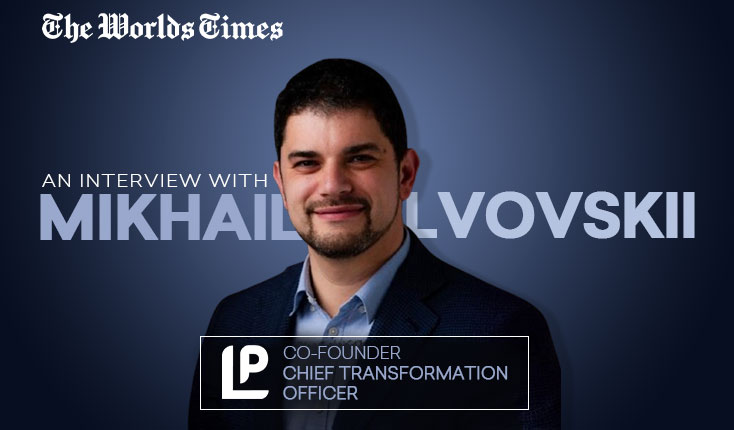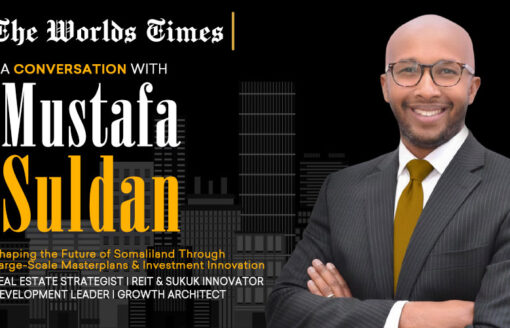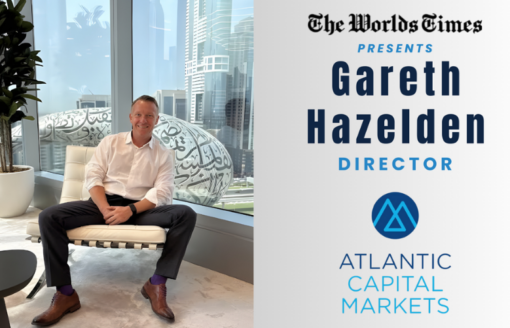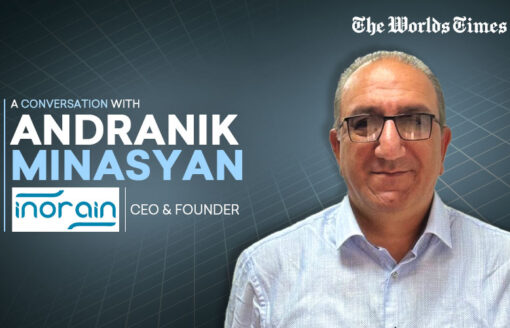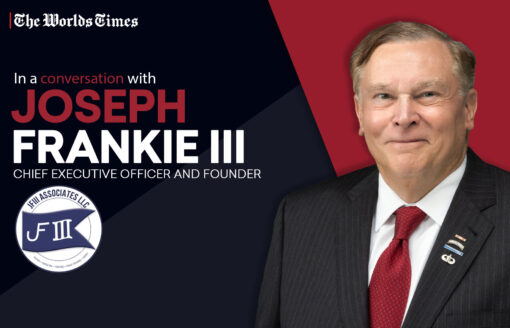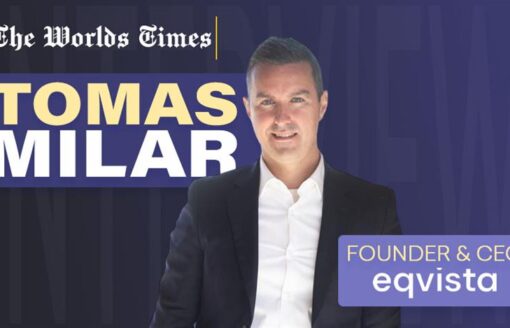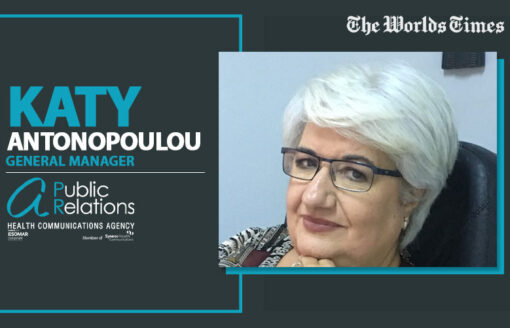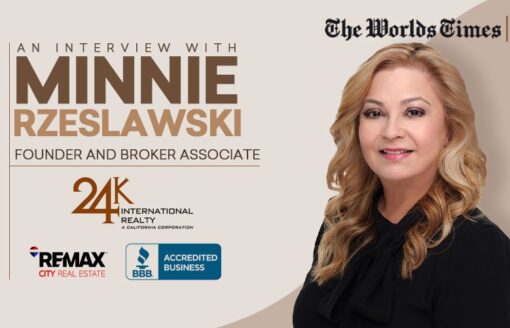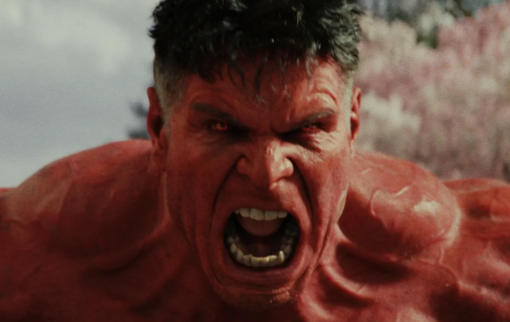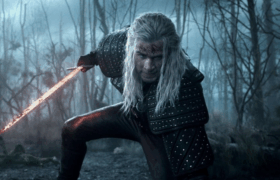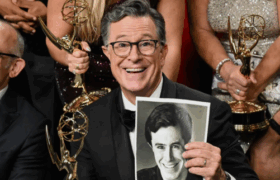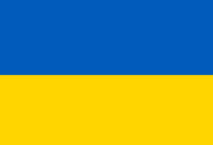Mikhail Lvovskii
In this insightful interview, Mikhail Lvovskii shares his journey from an unexpected start in sales to a thriving career in HR leadership, spanning over 20 years. Transitioning from corporate roles to founding his own consultancy, LeanPeople, Lvovskii explains his passion for transformative leadership and his commitment to fostering people-centric workplaces. He highlights the foundational principles of LeanPeople’s 10-Factor Model, emphasizing the holistic integration of leadership, culture, and organizational structure as keys to achieving high performance.
Lvovskii also addresses common obstacles in team transformation, such as resistance to change and lack of clear communication, and underscores the importance of moving leaders from “daily firefighting” to strategic thinking. He offers advice for CEOs seeking continuous improvement, stressing self-awareness, trust-building, and the need for a robust transformation strategy.
Company and Personal Background
We started the interview by asking, “Explain your background and your Company’s in detail.”
Mikhail Lvovskii replied, “I came to HR on occasion, but this turned out to be my professional choice for over 20 years.
My educational background was totally different; I graduated as an Accounting and Audit specialist, with most of my studies dedicated to Finances.
I started working early since I had to earn a living, and without higher education, in the second half of the 90s, it was only Sales in small enterprises which were available for me.
What started as an interesting area (HR services for companies) to apply my – still pretty modest – sales capabilities, turned to become my passion and I turned into in-house recruitment, then HR generalist, then HR manager, HR Director, Regional HR Head, and, finally, led me into EMEA leadership roles in HR.
Most of my corporate HR experience was connected with big multinational corporations, and there I saw my further development.
I learned in practice how to set up processes, I learned organisational dynamics and organisational psychology, and I learned leadership and how to integrate M&As. It’s been quite a journey to capture all possible aspects of people’s organisations, touching base with different functions and industries, covering White and Blue collars, expatriate and local management.
Along my career, around 2011-2015, I took several additional education programs to enhance my formal education towards the area of HR body of knowledge and specifics of international HR.
Still, by reaching the senior roles in corporate HR, I recognized that I have maybe a different passion.
My latest term (around 15 years) in corporate HR was connected with increasing numbers of transformative journeys, mainly in the area of leadership and culture, but in the latter years connected to sophisticated programs to revitalize entire business units and change organizational culture in international environments.
When I saw my transformational efforts find no interest in the corporate environment, when I realised the course is changing into steady maintenance and harvesting, I concluded that I had lost my main driver, my source of energy and excitement.
Thus, I decided to quit my dreams to proceed towards becoming a head of HR in a big multinational firm, but focus on transforming many companies into high-performing teams with modern leadership and unconventional ways of organizing .
By chance, that was the time I discovered that the World of Work does not solely consist of traditional businesses fostering Industrial era management principles. I found out enough examples of pioneers, innovators in the area of organizing and leadership, which strengthened my belief – things can be changing.
I knew perfectly: the need for change is tremendous. There are so many companies which may benefit from people centricity and there are so many of those which would definitely be glad to eliminate unnecessary dysfunctions.
So, I established my own consultancy, looking forward to applying my transformational experience, passion for modern leadership and Continuous Improvement, strong business acumen and capability to “feel” the business.”
A Breakdown of Each Element
The Worlds Times: Can you share the key principles behind LeanPeople’s 10-Factor Model and how each element contributes to an organisation’s overall success?
Mikhail Lvovskii replied, “The point of the 10-factor model lies in its comprehensiveness and interconnectedness of each element. We view the entire model holistically, without singling out any factor as a kind of “magic wand” that dictates everything.
This model evolved through practical, purely empirical means. Reflecting on all the journeys I embarked on myself or guided leaders through, I distilled my experiences into 10 key factors.
My firm belief is that Leadership and Culture are inevitable components of high – performing teams. While one may start from elsewhere, ultimately they will reach this level.
I even formulated my own definition of Leadership success factors, which I may share another time. Observing them in action, the best transformation experiences were always linked to exceptional, forward-thinking, people- centric leaders. Conversely, the poorest performing organizations were consistently led by inadequate leaders.
Within the 10 factors lie many common people-related issues that HR professionals handle. The entire field of Organizational Development within HR focuses on optimizing these factors for performance.
I ‘m referring to organizational structure; employee capabilities; talent discovery and utilization; teamwork and collaboration methods; employee engagement and overall atmosphere within a group.
All of these aspects contribute to organizational performance in the end, and none are adequate on their own. Addressing all of them comprehensively is the best, and perhaps only, method to achieve peak performance.
That’s what the approach is all about: regardless of where you start and what your priorities may be (major pain points), you will inevitably address all 10 factors in the end if you aim to make lasting improvements.
Obstacles to Team Transformation
The Worlds Times: From your experience with Electrolux and other ventures, what were the most common obstacles leaders faced when trying to transform underperforming teams?
Mikhail Lvovskii replied, “In my view, there is a pretty narrow range of obstacles we can describe at all. All possible variations are derivatives or combinations of those.
1. The fear of ruining what exists, and I think this is too often the starting point.
- Lack of knowledge on how to start and run transformation – basic change management capability.
- Failing to communicate clearly and enough.
- Too strong resistance from employees (sometimes illusive).
- Too strong moral considerations, preventing the direct addressing of issues.
- Blindly picking solutions that poorly fit particular circumstances.
- Not enough persistence to see it through to the end, risking to draw back.”
A Strategic Leadership Roadmap
The Worlds Times: You emphasise moving leaders from “daily firefighting” to “strategic excellence.” What are some initial steps you recommend for leaders to begin this shift effectively?
Mikhail Lvovskii replied, “In every aspect of personal development, everything starts with self-awareness.
In this specific case, recognizing how ineffective the daily routine is, how much time is wasted in this daily firefighting, is already a good starting point.
Analyze your calendar, estimate effort/impact balance of each item. Look if you are adding value to your organization and yourself. This is a common exercise I offer leaders in the very beginning of their journey.
Next step – deciding what can be abandoned, what can be delegated to others, and what should be transformed. It’s all about actions for sure, but behind them are beliefs and principles. So, sorting out what’s important and what’s not is a big step forward.”
Fusing Diverse Perspectives
The Worlds Times: In your journey to creating LeanPeople, what unique insights did you and your co-founder Sandro Guidi bring from your distinct backgrounds, and how have they shaped your holistic approach?
Mikhail Lvovskii replied, “You are right; we came from complementary areas, but with different insights.
I was bringing my knowledge of the corporate environment, the way transformations take place, practical experiences to bring underperforming teams to high performance.
Sandro, throughout 13 years of running Executive search, Headhunting and recruiting business, sees how many organisations fail to offer the best candidates fair reasons to join those companies. He’s been working with a higher number of organisations, witnessing many instances of environments which drastically and urgently require improvements. Not only to become more attractive for talents, but – and it makes it more interesting – to become better performing.
Since, in the end, what makes a company the employer of choice simultaneously makes it high performing!
So, in this joint effort, we decided to merge forces and bring forward the idea of transformative service for corporate clients.”
Aligning Values and Goals
The Worlds Times: Employee engagement and a values-driven culture are central to LeanPeople’s model. How do you measure these intangible qualities and ensure they are aligned with organisational goals?
Mikhail Lvovskii replied, “Here, I have a pretty good experience that I brought from the corporate environment.
Every serious employer makes efforts to hear employees’ voices and capture their perceptions about the workplace. Companies conduct regular employee engagement surveys. Lately, I have also seen the good practice of hearing employees in shorter and more regular form – employee pulse surveys.
In my view, there is nothing better than hearing the employee’s voice and understanding what makes them engaged.
There are multiple global studies proving that higher engagement leads to greater performance in various aspects.
If a company is not ready to go with well – recognized tools like Gallup Q12, is there always a way to design something customized.
It is important, though, not only to conduct engagement surveys but to carefully explore results, verify unclear points and root causes, and plan and implement improvements.
When we speak in general about aligning culture to organizational goals, we never take both separately. In fact, culture must go hand in hand with strategy and goals, from the very moment of ideation, planning, design, and development.”
Synchronising the Three Pillars
The Worlds Times: How does LeanPeople address the challenges of synchronising structures, processes, and culture within complex, fast-paced organisations?
Mikhail Lvovskii replied, “I would say, it does not matter what kind of size or pace an organization has. The elements representing 10 factors of organizational performance interweave pretty much the same way.
The same goes for a combination of structures, processes, and culture.
If we look at the combination holistically, in a systematic way, we recognize the interconnectedness and interdependence of those.
Let’s just think it through together. Let’s take a hypothetical example of a Fintech Company with a global structure, a very high pace of the scale-up phase.
We see that processes are still shaping, and the beauty of the moment is not to go too much into standardization and restrictions, remaining space for continuous improvement and experimentation. Becoming more structured does not mean each process and role should be strictly defined, the dynamics of a new company will still benefit from flexibility, and allowing people to critically look literally at any process step.
Structures are already pretty complex due to the size of a few thousand people globally and continue to grow and define new divisions, roles, levels of management, and functions. Here it is important to keep balance between clarity of roles and flexibility of assignments. Implementing a role-based approach brings much more value than defining perfect RASCIs and building matrix organizations with a clear prescription of what each does.
Culture shifts from typical start-up dynamic small teams focused on MVP, towards a structured business with roles and responsibilities, a mix of still entrepreneurship and emerging trends for an effectiveness and efficiency focus.
We should build robust leadership standards, clearly define the target culture we want to build, but still may not avoid respecting the sort of “craziness” of the start-up environment, extreme entrepreneurial spirit, and democratic openness.
Long story short: To maintain balance between elements, focus on their context and avoid making any element too important or exaggerated. Make sure everything is in the right amount and fits the situation.
A Strategic Guide
Lastly we asked, “What advice would you give to CEOs and business owners looking to create a performance roadmap that not only drives results but also supports continuous improvement and learning?”
“The best advice I can give is not to fall into the trap of illusions. One magic measure which makes it all nice does not exist.”
Always start with yourself, answering the following questions:
– Am I ready to start changing myself? Since part of the change will touch a leader for sure
– Am I ready to be in the center of turmoil in the coming months? It will be definitely an intensive period of change.
– Am I ready to trust my team, or what should I do to have a trusted team around me? The success in the long run a lot depends on the leadership team headed by an enlightened, visionary, and caring top leader.
– Finally, be fair to yourself to conclude, what kind of transformation capability you require to make it a success. Many change initiatives fail according to statistics. In my view, very often the resources brought into a transformation are simply inadequate. Plan very robust expertise and support here.” Mikhail Lvovskii Concluded
Connect Mikhail Lvovskii on LinkedIn
Visit LeanPeople to learn more about it
Also Read:
Stéphane Boukris: The French Entrepreneur
Ramneek Ahluwalia Interview CEO of Higher Health
A Conversation with Founder Sandro Gerber
